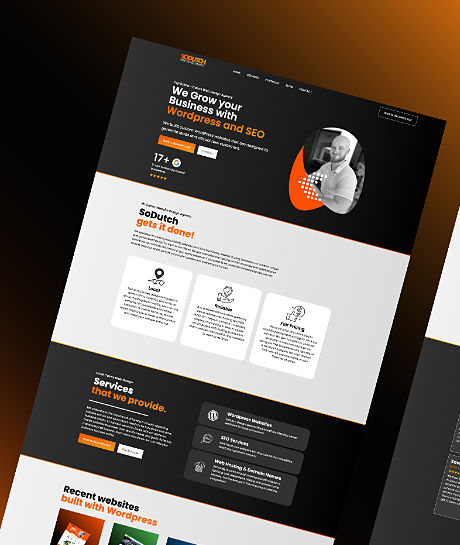5 Quick SEO Wins

Table of Contents
5 Quick SEO Wins to Elevate Your Website’s Performance Right Now
The online world changes all the time, and for businesses to keep up and stay ahead, they need to be on top of their game, especially online. One of the key parts of doing well online is making sure your website is easy to find through search engines, which is where Search Engine Optimization (SEO) comes in. With the right strategies, SEO can bring more people to your site naturally, make your site nicer to use, and in the end, lead to more people buying what you’re selling. In this article, we’ll share five easy SEO tips you can use right now to make your website work better.
1. Optimize Your Page Titles and Meta Descriptions
Page titles and meta descriptions are key elements that search engines use to understand the content of your website. These elements are displayed in search engine results pages (SERPs) and can significantly influence click-through rates (CTRs).
To optimize your page titles, ensure that they are unique, concise, and accurately reflect the content of the page. Incorporate relevant keywords without overstuffing, and try to keep the length under 60 characters to avoid truncation in SERPs.
Meta descriptions should provide a brief and enticing summary of the page’s content. Aim for a length of 150-160 characters and include relevant keywords. While meta descriptions don’t directly impact search rankings, a well-crafted description can encourage users to click on your link, thereby improving CTRs and sending positive signals to search engines.
Make sure to use RankMaths WordPress SEO Plugin to easily do these changes.
2. Enhance Website Loading Speed
Website loading speed is a crucial factor in both user experience and search engine rankings. A slow-loading site can lead to increased bounce rates, as users are likely to abandon the page if it takes too long to load.
To improve your site’s loading speed, consider implementing the following:
- Optimize images: Compress images to reduce file size without compromising quality, and choose the appropriate file format (e.g., JPEG for photographs, PNG for graphics with transparency).
- Minify CSS, JavaScript, and HTML: Minification reduces the size of code files by eliminating unnecessary characters, spaces, and comments.
- Leverage browser caching: Browser caching stores static files on the user’s device, allowing the site to load faster on subsequent visits.
- Use a content delivery network (CDN): A CDN can speed up content delivery by serving files from a server geographically closer to the user.
3. Optimize Content for Featured Snippets
Featured snippets are selected search results that appear at the top of Google’s organic search results, offering quick answers to users’ queries. They can drive significant organic traffic to your site and enhance visibility in search results.
To optimize your content for featured snippets:
- Create high-quality, informative content that directly answers users’ questions.
- Structure your content with clear headings and bullet points or numbered lists.
- Use concise and easy-to-understand language.
- Monitor search queries that drive traffic to your site and optimize content accordingly.
4. Make Your Website Mobile-Friendly
With the majority of users accessing the internet via mobile devices, having a mobile-friendly website is essential for both user experience and search engine rankings. Google’s mobile-first indexing means that the mobile version of your site is primarily used for indexing and ranking purposes.
To ensure your site is mobile-friendly:
- Use a responsive design that adapts to different screen sizes and devices.
- Optimize navigation and site layout for touchscreens, with ample spacing between clickable elements.
- Ensure text is legible and doesn’t require zooming to read.
- Test your site’s mobile-friendliness using Google’s Mobile-Friendly Test tool.
5. Strengthen Internal Linking Structure
Internal links connect pages within your website and can help search engines understand the structure of your site and the relationships between pages. A strong internal linking structure can improve crawlability, indexation, and the distribution of link equity throughout your site.
To strengthen your internal linking structure:
- Create a logical hierarchy of pages, with a clear navigation menu that allows users and search engines to easily access important content.
- Use descriptive anchor text that accurately reflects the linked page’s content. Avoid using generic terms like “click here” or “learn more.”
- Link to relevant pages within your site’s content. This not only helps users find related information but also signals to search engines the importance of those pages.
- Regularly audit your internal links to identify and fix broken links, which can negatively impact user experience and crawlability.
Conclusion
Implementing these five quick SEO wins can help elevate your website’s performance in search engine rankings, driving more organic traffic and improving user experience. By optimizing page titles and meta descriptions, enhancing website loading speed, targeting featured snippets, ensuring mobile-friendliness, and strengthening your internal linking structure, you can stay ahead of the competition and make your website more visible and accessible to users.
Remember that SEO is an ongoing process, requiring continuous monitoring, analysis, and optimization to adapt to ever-changing algorithms and user behavior. Staying informed about the latest SEO trends and best practices will help you maintain your website’s performance and visibility in the long run.
SoDutch does these changes on a daily basis so feel free to book in a free discovery call to see how we can help you!
Frequently asked questions
What are some quick SEO wins that can elevate website performance?
Optimizing page titles and meta descriptions, enhancing website loading speed, targeting featured snippets, ensuring mobile-friendliness, and strengthening internal linking structure are some quick SEO wins that can elevate website performance.
How can I optimize my page titles and meta descriptions?
To optimize page titles, ensure they are unique, concise, and accurately reflect the page’s content. Incorporate relevant keywords without overstuffing, and keep the length under 60 characters. For meta descriptions, aim for a length of 150-160 characters and provide a brief and enticing summary of the page’s content. Use RankMaths WordPress SEO Plugin to easily make these changes.
What are some ways to enhance website loading speed?
To enhance website loading speed, optimize images, minify CSS, JavaScript, and HTML, leverage browser caching, and use a content delivery network (CDN).
What are featured snippets, and how can I optimize my content for them?
Featured snippets are selected search results that appear at the top of Google’s organic search results, offering quick answers to users’ queries. To optimize content for featured snippets, create high-quality, informative content that directly answers users’ questions, structure content with clear headings and bullet points or numbered lists, use concise and easy-to-understand language, and monitor search queries that drive traffic to your site and optimize content accordingly.
How can I strengthen my internal linking structure?
To strengthen internal linking structure, create a logical hierarchy of pages with a clear navigation menu, use descriptive anchor text that accurately reflects the linked page’s content, link to relevant pages within the site’s content, and regularly audit internal links to identify and fix broken links.



